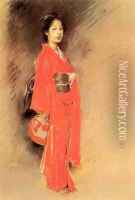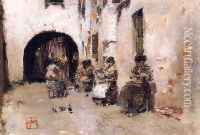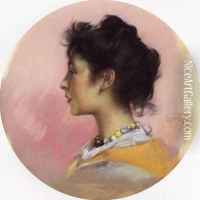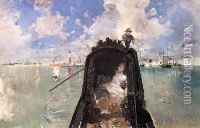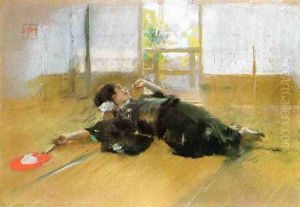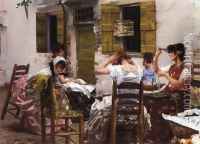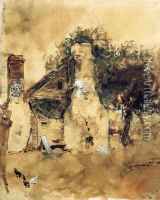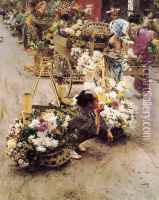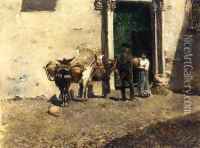Robert Frederick Blum Paintings
Robert Frederick Blum was an American artist known for his genre scenes and murals. Born on July 9, 1857, in Cincinnati, Ohio, Blum showed artistic talent at an early age. He began his artistic training at the McMicken School of Design in Cincinnati and later moved to New York City to further his career.
In New York, Blum became associated with the art community centered around the Tenth Street Studio Building, where he came into contact with many prominent artists of the time, including William Merritt Chase and Frank Duveneck. His early works were often illustrations for magazines such as 'Scribner's Monthly' and 'Century Magazine', which were popular publications of the era.
Blum traveled extensively, which greatly influenced his artistic style. His trips to Venice and Spain had a profound impact on his use of color and his interest in capturing the effects of light. It was during his travels in Japan, where he stayed from 1890 to 1892, that he created some of his most significant work. Blum was fascinated by Japanese culture and art, and he incorporated many elements of it into his own work, helping to popularize Japonisme in American art.
His most notable works from this period include 'The Ameya' (1893), which is a depiction of a Japanese candy-seller, and his mural 'The Feast of Flowers' at the Mendelssohn Glee Club in New York City. Blum was also an active member of various artistic organizations, including the Society of American Artists and the National Academy of Design, where he became an academician.
Throughout his career, Blum's work received positive recognition, and he was awarded several medals for his contributions to the art world, including at international expositions. Unfortunately, his life was cut short when he died in New York City on June 8, 1903, at the age of 45. Despite his relatively brief career, Robert Frederick Blum left a lasting impression on the world of American art, particularly through his role in introducing elements of Japanese aesthetics to a Western audience.
